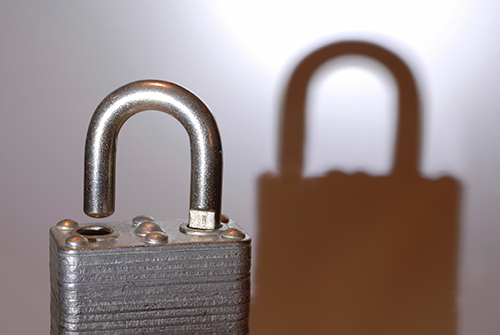“Malo periculosam, libertatem quam quietam servitutem”
Thomas Jefferson, from a letter to James Madison
Jefferson’s Latin is probably most often translated as “I prefer dangerous freedom over peaceful slavery”, though, in the context of the letter, it might be more accurately “I prefer the tumult of liberty to the quiet of servitude”.
But in truth we rarely face a choice between dangerous freedom and peaceful slavery. It’s usually a question of sacrificing—or being forced to sacrifice—individual liberty for the illusion of safety.
“I have a right to feel safe”—so begins many an anti-gun rant, usually followed by a demand for some form of anti-gun legislation. But feeling safe is not the same as being safe. The Titanic was billed as “unsinkable”, and I’ll bet all 2,244 passengers and crew felt extremely safe when they boarded the vessel in Southampton (and Cherbourg and Queenstown).
Conversely, feeling threatened or scared is not the same thing as being in danger. We’ve probably all raced idiotically up the stairs after switching off the basement light, but remarkably few of us have been grabbed by the boogeyman.
The allure of the illusion of safety may explain the non-gun-owning public’s fascination with so-called “Smart Guns”. We all saw how one saved James Bond in Skyfall. However, for those of us who actually own and use firearms, there is little appeal in a gun whose sole unique characteristic is that it defaults to failure.
In addition, subscribing to the “Smart Gun” myth requires that several basic facts be ignored:
First, some people already cannot afford or choose not to spend the tens to hundreds of dollars required to avail themselves of current gun safety technology—locks and mechanical safes, widely available and effective—or believe that utilizing those systems is too inconvenient. What is the likelihood that they would electively spend hundreds to thousands of dollars more for new, fickle “Smart Gun” technology?
Second, there are already well over 300 million non-smart guns in private hands in the US—some estimates suggest there may be upwards of 600 million. The useful life of most of those firearms is measured on the order of decades. I have three rifles that are over 70 years old—thank you, Civilian Marksmanship Program!—and they function as well today as on the day they were manufactured. Our current private arsenal isn’t going anywhere.
And third, assume for the sake of argument that all of those ‘dumb’ firearms could be peacefully taken out of circulation, and that all firearms in private hands could be replaced with “Smart Guns”. People would quickly learn to retrofit their government mandated, but unwanted, “Smart Guns” and in short order a large percentage would be returned to “dumb” technology.
Similar failures of basic logic, data misinterpretation, and denial of human nature plague other gun control schemes. So-called “Gun Free Zones”, magazine restrictions, waiting periods and other programs all present the illusion of safety to those who ignore facts and common sense. And that illusion is not free, but comes at the cost of individual liberty. Worse still, those who crave it seek to pay for it not by sacrificing their own liberty, but by taking the freedoms of others who don’t believe the illusion.
What advantage could the Herculean effort required to substitute “Smart Guns” potentially provide? Perhaps accidents due to unauthorized access might be prevented. Yet, while every accidental death is a terrible loss, the numbers are very small, and the technology to prevent them already exists, at a cost that is not, like Smart Guns, prohibitive to lower income families.
According to the CDC, during the 15 years from 2001-2015, 697 children 12 & under were killed by accidental gunshot wounds—an average of only 47 each year. I can’t imagine the anguish and loss those parents must feel for the rest of their lives. However, during that same period, 61,407 children died of all accidental causes, including 21,727 who died in motor vehicle accidents, 16,049 who suffocated, 10,182 children who drowned, 5,341 who died in fires, and 1,097 who died of accidental poisoning.
In addition to responsible safe storage, the other best safeguard against these tragedies is education. How do we minimize the risk our children face from potential drowning? As early as reasonably possible, we teach them how to swim. And while they’re too young to exercise good judgment, we prevent them from having unsupervised access to potential drowning sources. The necessary technology to do the same with firearms already exists, at nominal cost.
“Smart Guns” are a fool’s bet for those who don’t know what they don’t know. If we really want to protect our children, instead of penalizing all mention of firearms in our schools, let’s provide gun safety courses in school. Instead of enacting paternalistic and pointless “safe storage” laws that only provide the illusion of safety, let’s make gun ownership, including the promotion of safe storage, an acceptable topic for polite discussion.
Just as there are fools who drive recklessly, don’t wear seatbelts or require their children to, who don’t lock up their medications and poisons and other potentially dangerous household objects, there are of course foolhardy and careless gun owners. But these are the exception, as the fortunate rarity of accidental gun death demonstrates.
Instead of pretending that expensive and unreliable technology or other legislative schemes can further safeguard our children, let’s promote the use of existing technology and education to help achieve that laudable goal. After all, genuine safety and security is one of the primary reasons most of us own guns in the first place.
I prefer freedom. That includes taking responsibility for my own security.

—Tom Vaughan, MD is a neuroradiologist in private practice in Louisville, KY. He is a shooting enthusiast who believes in individual liberty and personal responsibility.
All DRGO articles by Tom Vaughan, MD.

